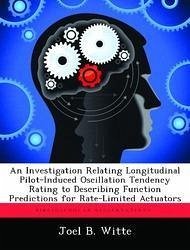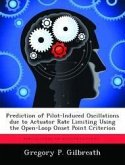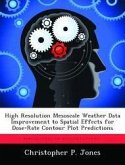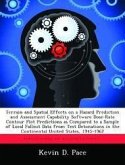The purpose of this study was to investigate pilot-induced oscillations (PIO) and determine a method by which a PIO tendency rating could be predicted. In particular, longitudinal PIO in the presence of rate-limited actuators were singled out for examination. Sinusoidal input/triangular output describing function techniques using Nichols charts were used. A new criterion dubbed Gap Criterion was calculated for PIO sensitivity. This criterion consists of the product of additional pilot gain and the normalized maximum amplitude of the commanded actuator necessary to cause PIO. These results were paired with simulator and flight test PIO tendency rating data. The PIO rating scale used was the PIO tendency classification of MIL-HDBK-1797. This concept was applied to two historical test databases, HAVE PREVENT and HAVE OLOP.








